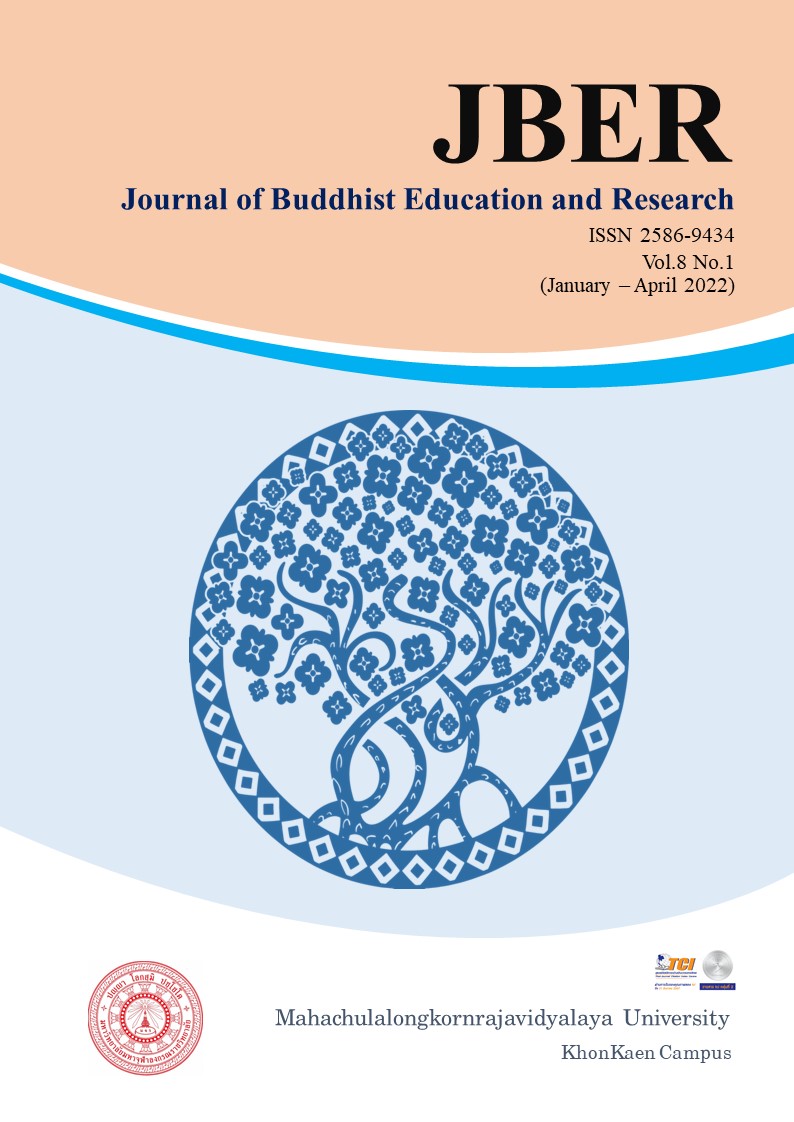EFFECTS OF USING THE TOTAL PHYSICAL RESPONSE APPROACH ON LISTENING-SPEAKING ABILITY OF THE FIRST GRADE STUDENTS
Keywords:
Total Physical Response approach; listening ability; speaking abilityAbstract
The purpose of the study is to find out the effect of using Total Physical Response approach on listening-speaking ability of the first grade students; and to explore the attitudes of the first grader toward learning by using Total Physical Response approach on listening-speaking ability. The research was conducted 22 first grade students of Prachachon Utid School during the second semester of the 2020 academic year. The research uses the quantitative and qualitative descriptive design. The instruments used in this story were: pretest, posttest, treatment, and interview distribution. The results of the research were analyzed for arithmetic mean, standard mean, standard deviation, and percentage. By comparing the scores in the pre-test and post-test,
The research results were found that:
- The scores in the post-test were significantly higher than that in the pre-test at the significant level of .05
- The result of the interview indicate that students felt satisfied which can be separated into two issues: In learning management, it was found that the learners had opinions that the arrangement and the content were suitable for their interests that made learners enjoyed while learning. On the part of the teachers, the students were satisfied because the teacher was always ready to help. Besides, the teacher had methods of reinforcement and encouragement that can motivate them well.
References
กรมวิชาการ. (2551). เอกสารประกอบหลักสูตรแกนกลางการศึกษาขั้นพื้นฐานพุทธศักราช 2551 คู่มือการจัดการเรียนรู้ กลุ่มสาระภาษาต่างประเทศ. กรุงเทพฯ : องค์การรับส่งสินค้าและพัสดุภัณฑ์.
กระทรวงศึกษาธิการ. (2551). ตัวชี้วัดและสาระการเรียนรู้แกนกลาง กลุ่มสาระการเรียนรู้ภาษาต่างประเทศ ตามหลักสูตรแกนกลางการศึกษาขั้นพื้นฐาน พุทธศักราช 2551. กรุงเทพฯ : ชุมนุมสหกรณ์การเกษตรแห่งประเทศไทย.
ทัศนา ประสานตรี, มนตรี อนันตรักษ์ และ รุ่งทิวา อุ่นเจริญ. (2557). การเปรียบเทียบผลสัมฤทธิ์ทางการเรียนและทักษะการสื่อสารภาษาอังกฤษ ของนักเรียนชั้นประถมศึกษาปีที่ 4 ระหว่างการจัดกิจกรรมการเรียนรู้แบบ TPR และการจัดกิจกรรมการเรียนรู้แบบ B-SLIM. วารสารมหาวิทยาลัยนครพนม, 4(3), 85-93.
ภัทรวดี ปันติ. (2558). ผลการใช้วิธีการสอนแบบตอบสนองด้วยท่าทางที่มีต่อทักษะการฟังและพูดภาษาอังกฤษและการกล้าแสดงออกของนักเรียนชั้นประถมศึกษาปีที่ 2 โรงเรียนกมล-เรียม สุโกศล (บ้านผาใต้). การค้นคว้าอิสระครุศาสตรมหาบัณฑิต. มหาวิทยาลัยราชภัฎเชียงใหม่.
วันทนี ไพรินทร์. (2547). การพัฒนาความสามารถในการฟังและการพูดภาษาอังกฤษของนักเรียนชั้นประถมศึกษาปีที่ 1 โรงเรียนคลองทวีวัฒนา ที่ได้รับการสอนโดยวิธีสอนแบบการตอบสนองด้วยท่าทาง. สารนิพนธ์ศิลปศาสตรมหาบัณฑิต. มหาวิทยาลัยศรีนครินทรวิโรฒ.
วารุณี ศิริและอภิราดี จันทร์แสง. (2560). การพัฒนาการจัดการเรียนรู้โดยใช้วิธีสอนแบบลตอบสนองด้วยท่าทาง (TPR) ที่มีผลต่อทักษะการฟังและการพูดภาษาอังกฤษ สำหรับนักเรียนชั้นประถมศึกษาปีที่ 1. การค้นคว้าอิสระการศึกษามหาบัณฑิต. มหาวิทยาลัยมหาสารคาม.
สถาบันทดสอบการศึกษาแห่งชาติ. (2562). รายงานผลการสอบระดับชาติขั้นพื้นฐาน (O-NET) ปี การศึกษา 2562. สืบค้นเมื่อ 9 สิงหาคม 2563. จาก http://www.niets.or.th.
สุนารี จิตรรัมย์ และ สิทธิพล อาจอินทร์. (2561). การพัฒนาความสามารถในการฟังภาษาอังกฤษของนักเรียนชั้นประถมศึกษาปีที่ 1 โดยใช้การจัดการเรียนรู้แบบตอบสนองด้วยท่าทาง. Journal of Education Graduate Studies Research, KKU. 12(1), 205-213.
อนงค์ เชื้อนนท์. (2555). เทคนิคการสอนภาษาอังกฤษ. สืบค้นเมื่อ 8 สิงหาคม 2563. จาก https://www.moe.go.th/moe/
A., Ratminingsih, M., Marjohan, A. Prananti. (2019). The Study of TPR Implementation in Teaching Listening and Speaking for Elementary School at SD Laboratorium Undiksha Singaraja in the Academic Year 2013/2014. Jurnal Pendidikan Bahasa Inggris Undiksha, 7(2), 1-10.
Asher, J. (1979). Learning Another Language Through Actions. The Complete Teacher’s Guidebook. California: Sky Oaks Productions.
Ayu Santika, Mimin Aminah and Jufrianto Sibarani. (2020). The Effect of Total Physical Response (TPR) Teaching Method Towards Students’ Speaking Skill. Prosiding Seminar Nasional Pendidikan Universitas Subang (SENDINUSA), 15-20.
Dwi Suryaningrum. (2017). The Effect of Total Physical Response Technique on the Eleventh Graders’ Speaking Ability at SMA PSKD 7 Depok. JET Journal of English Teaching, 3(1), 55-64.
Education First (EF). (2019). The world's largest ranking of countries and regions by English skills. Retrieved November 27, 2019 from http://www.ef.co.th.
Morse, N. C. (1995). Satisfication in The White Collar job. Michigab: University of Michigan Press.
Pham Vu Phi Ho Ngo Thi Cam Anh. (2018). The Effect of Using Total Physical Response (TPR) on EFL Young Learners’ Vocabulary and Speaking Fluency. KỶ YẾU HỘI THẢO KHOA HỌC, 128-137.
Phillips, S. (2002). กิจกรรมภาษาอังกฤษกับเด็ก (young learners). เตือนใจ เฉลิมกิจ แปล. กรุงเทพฯ: หน้าต่างสู่โลกกว้าง.
Sühendan Er. (2013). Using Total Physical Response Method in Early Childhood Foreign Language Teaching Environments. Procedia - Social and Behavioral Sciences, 93(3), 1766-1768.





